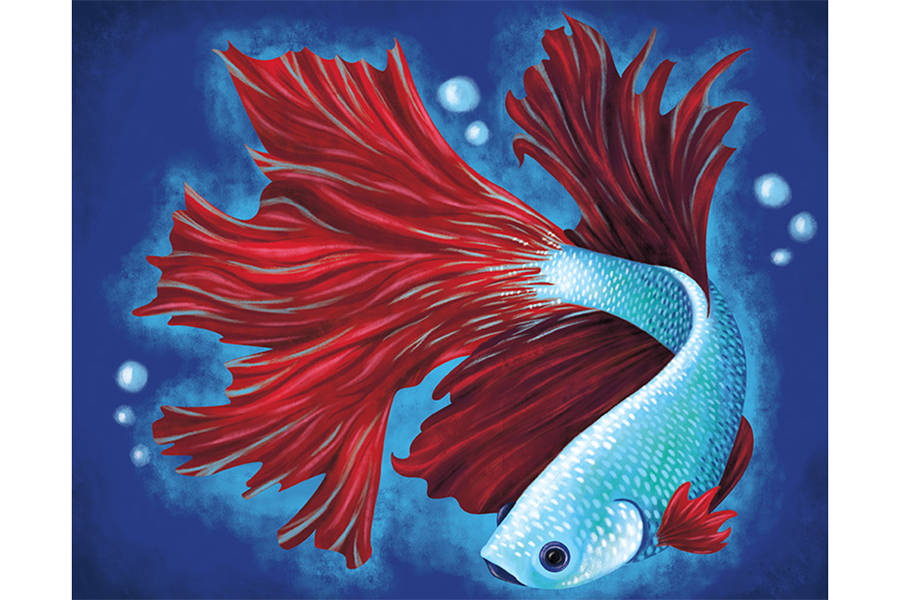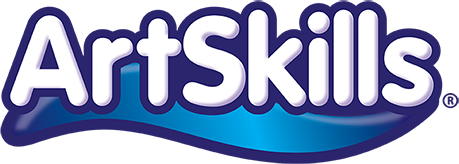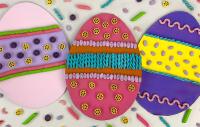Acrylic Painting - Bold Betta Fish
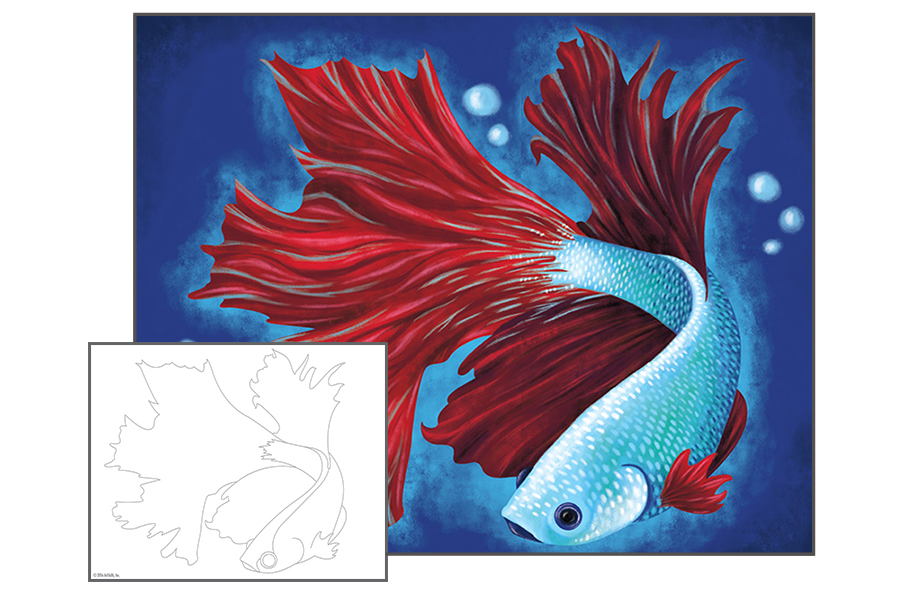
Supplies Needed
This project works best when using the materials shown below. These items can be found in the ArtSkills Premium Artist Case!
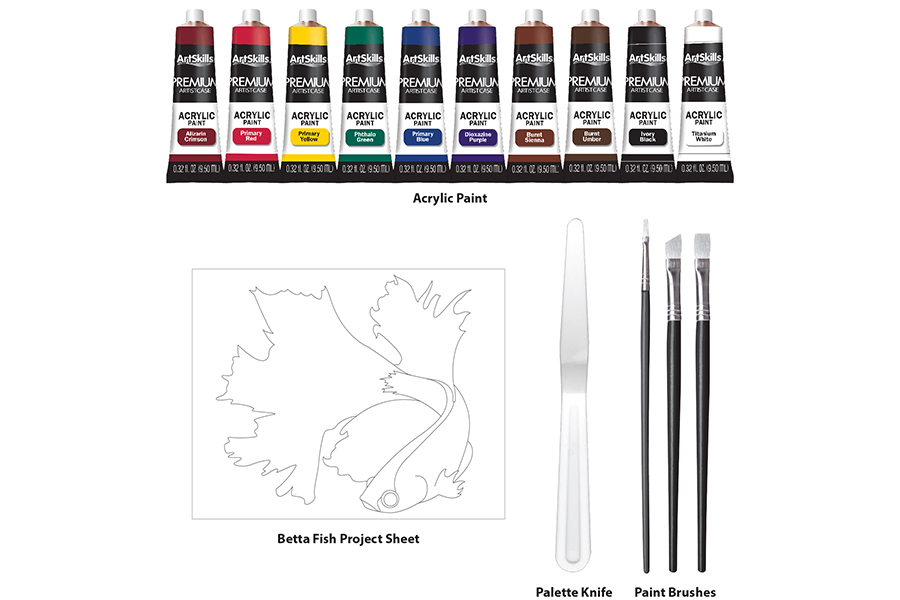

Color Guides
Use the color wheel and paint mixing grid to create a variety of hues.
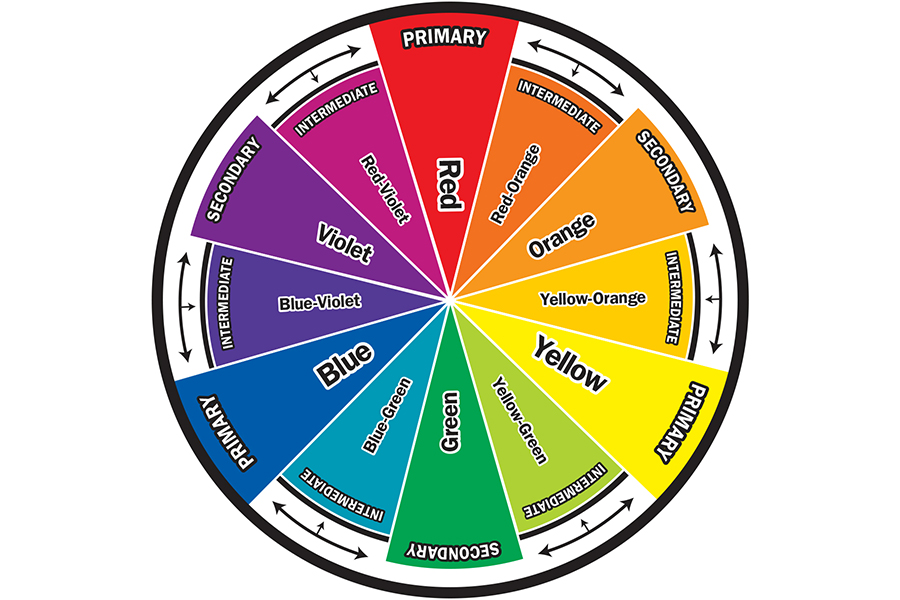

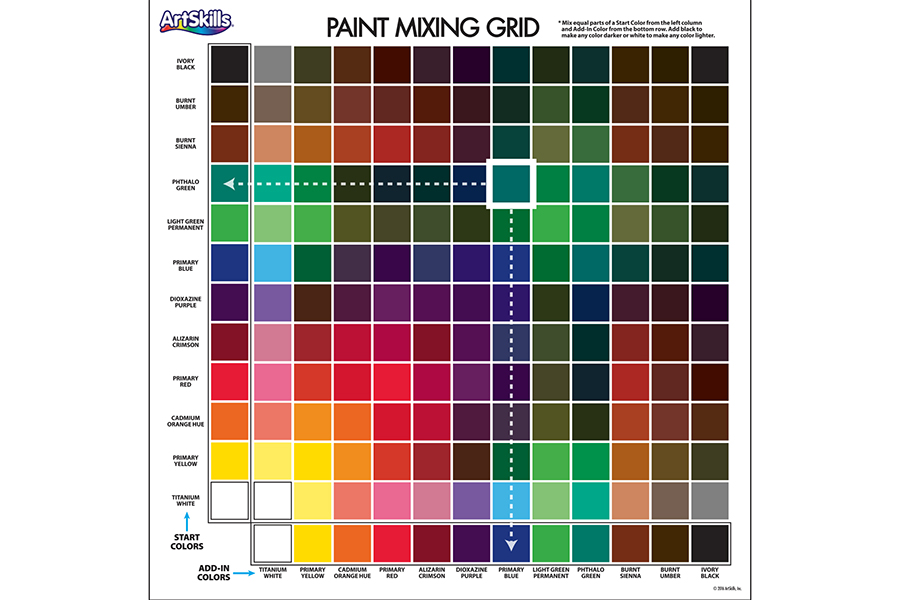

Tips & Tricks
Opaque vs. Transparent Paint
Acrylic paint can be used as opaque (non-transparent) if used straight from the tube, but can become transparent by adding water.
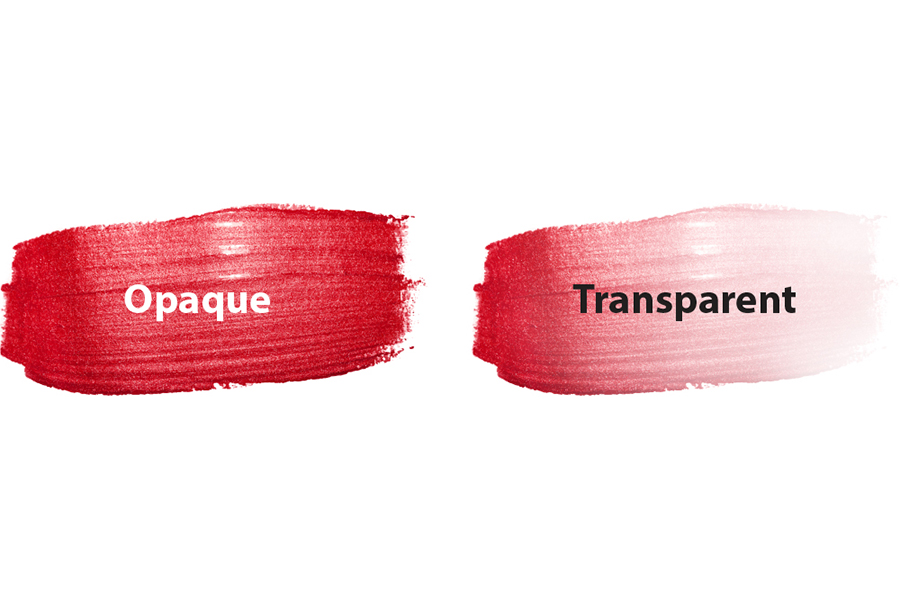

Blending Paints Together
Acrylics dry very quickly, so be sure to blend your colors immediately after laying them down on your surface. Extend your blending time by spritzing water on your painting with a spray bottle.
Adding Texture to Paintings
Using the "impasto technique" will add unique, 3D layers and textures to your painting. To achieve this, use a generous amount of paint on a palette knife and apply thick layers on to your surface.
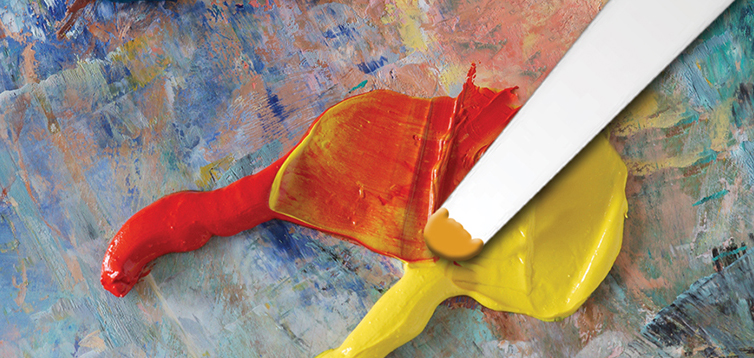

Let's Get Started!
STEP 1: Paint the First Layer of Colors
Begin by painting the base colors of the Betta fish. Mix equal parts of Crimson and Primary Yellow to create a bright red color to use for the fins and tail. Mix equal parts of Primary Red and Burnt Umber to create a darker red, which will be used for the fins behind the body of the fish. Mix equal parts of Primary Blue and Titanium White for the body of the fish. Add a small amount of extra Titanium White to this color to create a very light blue, and use it along the fish’s face and spine. Use Primary Blue for the eyes, mouth, and cheek of the fish.
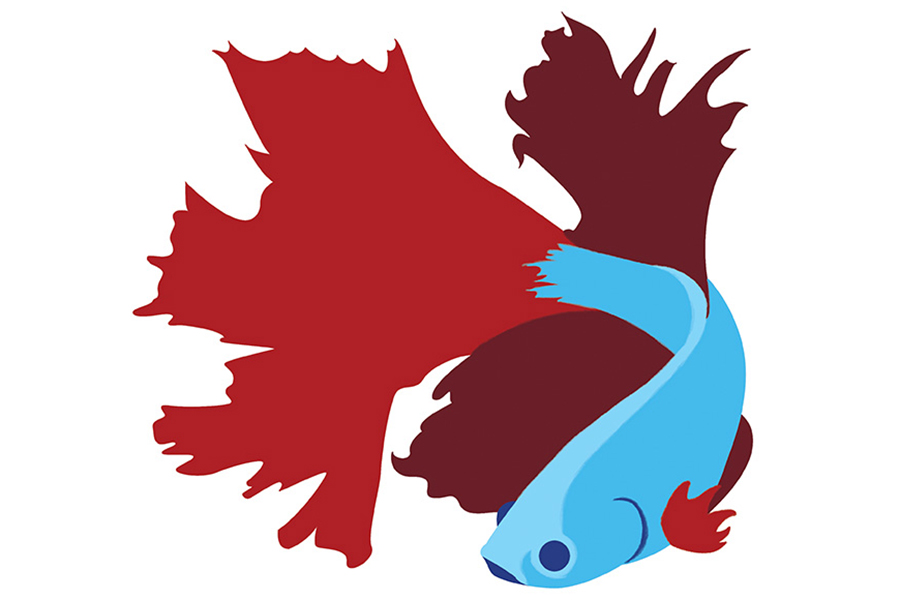

STEP 2: Blend the Different Shades
Begin to shade your fish. Use the dark red mixture to add shadows to the folds of the tail and fins. Softly blend them into the base color. Add highlights with Primary Red. For the dark red fins, mix equal parts of Burnt Sienna and Purple to use for shadows. Use the bright red mixture for highlights. Be sure to paint your shaded strokes in a natural direction, following the curves of the fin and tail. Blend the lightest blue mixture highlights into the body, and use White for the brightest areas. Use Primary Blue for shadows along the bottom of the fish’s body.
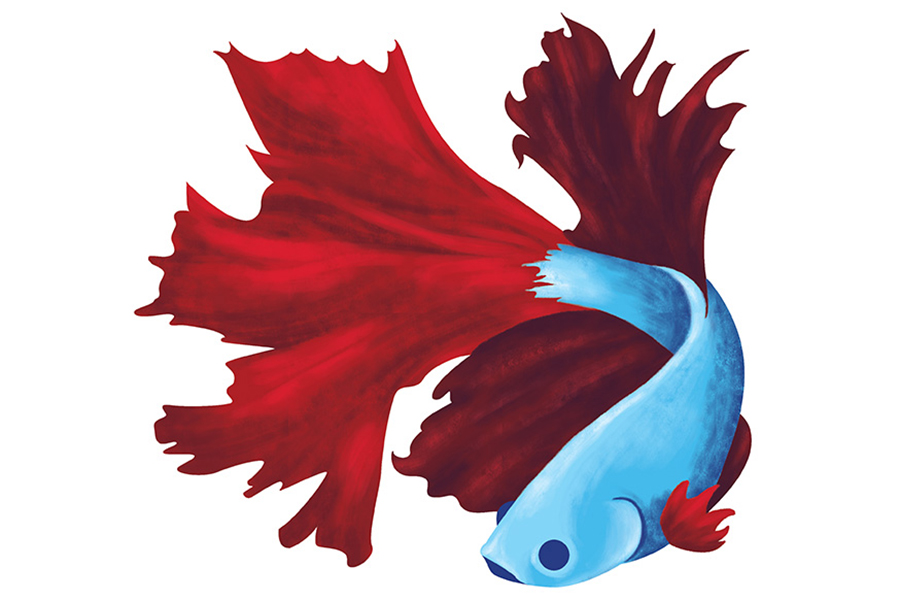

STEP 3: Add Finer Detail
Using your light and dark red mixtures, paint in detailed strokes to the fish’s tail and fins. Use your smallest brush for this step. Continue to follow the natural curves of the fin and tail. Mix equal parts of Primary Blue and Ivory Black to add a center to both eyes and shade the mouth. Use Titanium White for a thin ring around the center of the eye. Mix equal parts of Forest Green and Titanium White to create a teal color. Gently blend this into the fish’s body being sure not to cover your highlights or shadows. Paint Primary Blue in the background around the fish. You may have to coat the background with several coats to achieve a rich blue color.
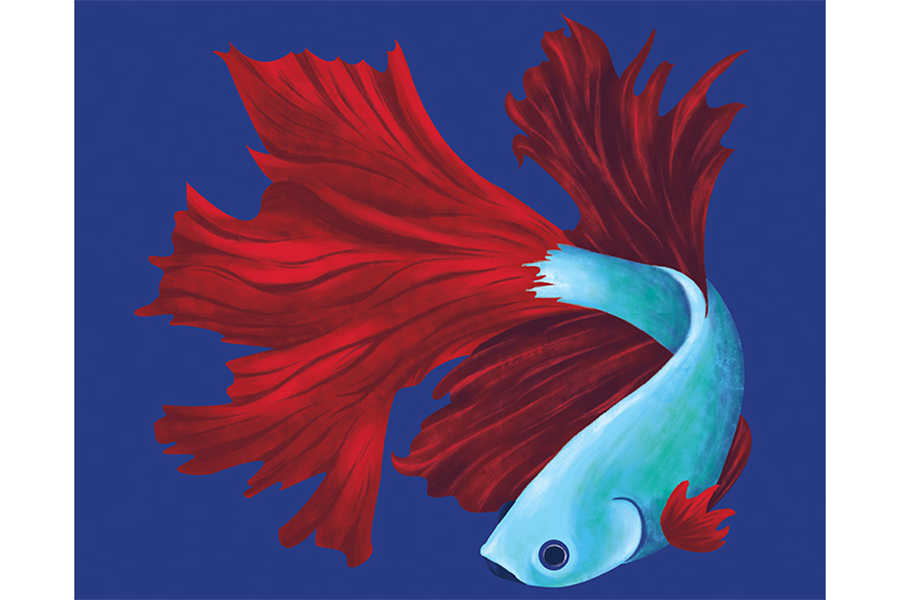

STEP 4: Develop Further Realism
Use your smallest brush and your lightest blue mixture to add accents to the tail and back fins. Use black to add deep shadows to the dark red fins. Start close to the body moving outwards with thin strokes. Paint scales onto the fish with your smallest brush. Use small, quick dabs, and curve them around the fish’s body to make them look natural. Use Titanium White for the scales on the spine, face, cheek, and end of the tail. Use your lightest blue mixture for scales on the middle of the body and tail. Use your Titanium White/Primary Blue mixture for the scales at the bottom of the fish’s body. Use your Primary Blue/ Ivory Black mixture to shade the edges of the page, starting in the corners and moving towards the center.
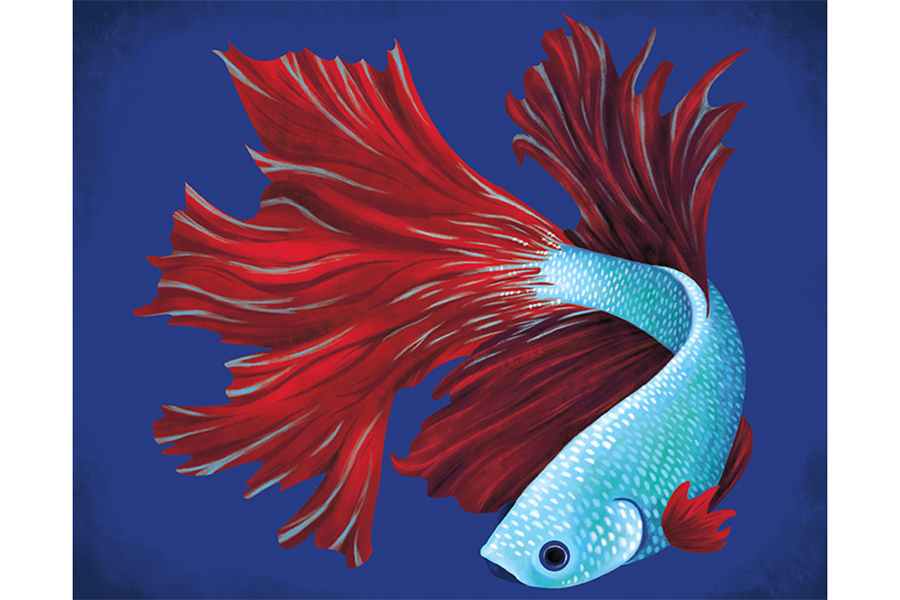

STEP 5: Finalize Your Artwork
Mix equal parts of Primary Red and White to create pink. Use this for final highlights on the tail and fins. Using your various red mixtures, make strokes that trail from the side fin onto the body of the fish. Use Titanium White for final detailed highlights in the eyes and mouth. Use Primary Blue and make small dark scales along the darkest parts of the fish’s body. Water down White paint and use it to create soft highlights along the spine, cheek and tail. Finally, use your two light blue mixtures to create a highlight around the fish, as well as several small bubbles.
